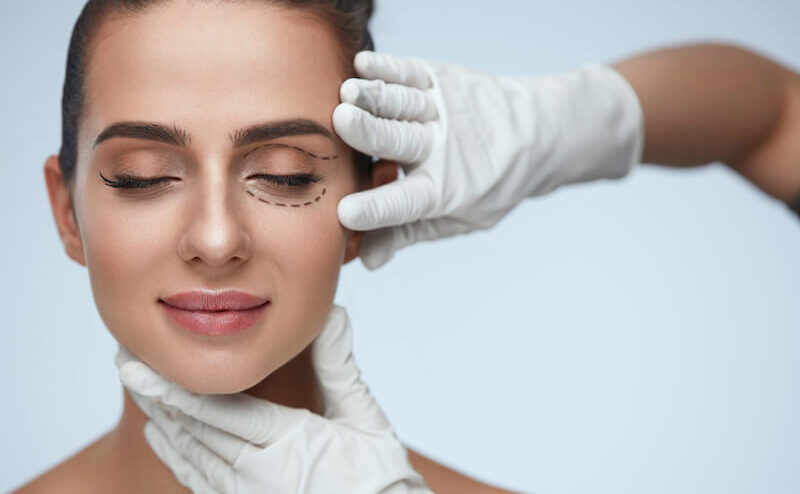
Non-Surgical Eyelid Lift in Wroclaw, Poland – Nowa Estetyka Medical Center
Correction of Drooping Eyelids and Asymmetry
Drooping eyelids commonly occur in mature individuals due to the loss of skin elasticity and present a noticeable cosmetic issue. It can make applying makeup more difficult and give the face a tired or sad appearance. Patients with loose skin around the eyes often appear older than they really are.
Drooping eyelids can also occur in younger individuals, often caused by specific bone structure and deep-set eyes. Factors contributing to this condition include overstretching of the delicate eyelid skin, improper makeup removal, lack of daily care, and the natural aging process. After the age of 25, the amount of collagen in the skin decreases, leading to reduced skin firmness and a tendency for sagging, particularly in areas where the skin is very thin. Muscle dysfunction around the eyelids can worsen the issue, and in extreme cases, blepharoptosis may obscure the iris, making normal vision more difficult.
A non-surgical eyelid lift and general rejuvenation of the skin around the eyes can be achieved with a plasma generator or through the application of stem cells. A preventative plasma eyelid lift performed at a young age, when the first signs of skin sagging appear, can help avoid the need for surgical intervention in the future.
Blepharoplasty with Plasma Technology
A micro-plasma beam is an excellent alternative to surgical procedures—it offers greater safety, a relatively short recovery period, and virtually no complications. Plasma generator treatments can effectively address drooping upper and lower eyelids. Local anesthesia is optional, and results are visible immediately after the procedure. With the use of a lidocaine cream, there are no typical bruises from injections. Indications for non-surgical blepharoplasty include loose skin around the eyes, crow’s feet, drooping upper eyelids, and wrinkles on the lower eyelids.
Plasmage Treatment for Drooping Eyelids
The electric charge of electrons and ions generated by the plasma device acts like a scalpel, allowing for the evaporation of water from the cells and, in turn, tightening the excess sagging skin on the eyelids. A plasma treatment session takes about 20-30 minutes per eye/eyelid.
In some cases, 2-3 treatments may be necessary to achieve visible results, depending on the severity of the condition. If there is excess fat accumulation around the eyes, satisfactory results may only be achieved through surgical intervention.
Immediately after a plasma eyelid correction procedure, localized swelling, small marks from the plasma contact, and redness may be visible—these symptoms typically resolve completely within 14 days post-treatment. Therefore, the patient is not sidelined from daily activities for as long as they would be with surgical blepharoplasty. However, the procedure does require a few days of recovery, making the fall and winter months the best time for plasma eyelid correction.
Until the scabs fall off naturally, makeup should not be applied around the eyes. It is important not to pick at the scabs, as this can lead to scarring.
Plasma treatment is also used for smoker’s lines or loose skin on the lower face.